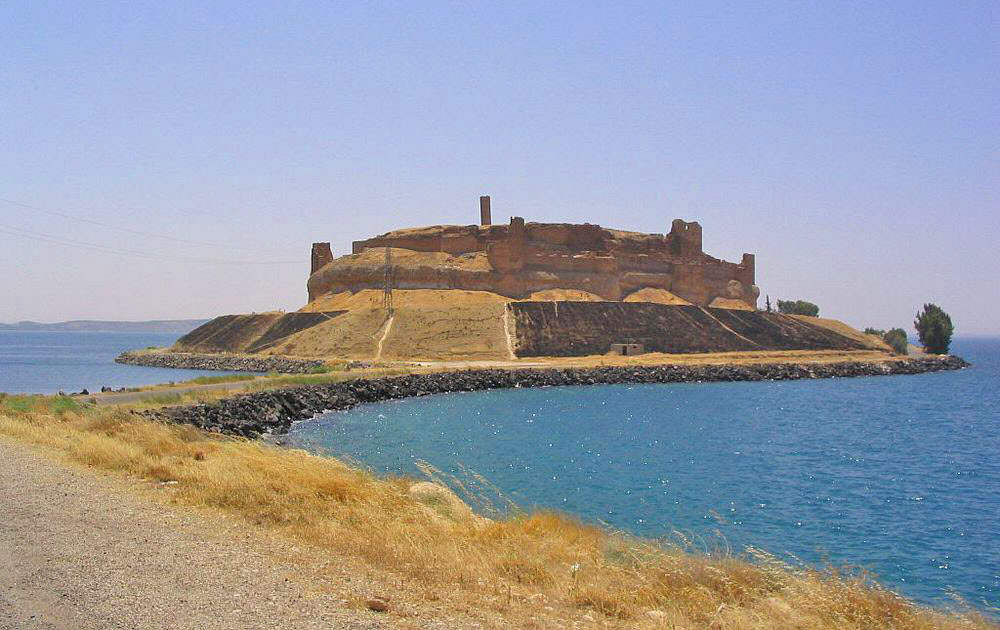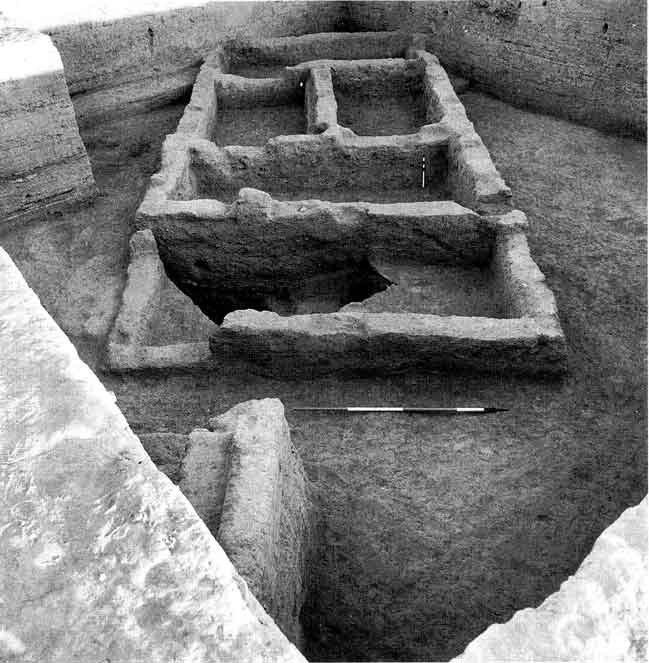Civilization is said to have begun independently across the world at six sites, dubbed the “cradle of civilization. Two of these are in the Middle East, two in Asia, and two in the Americas. The two sites that are in the Middle East are part of a larger region called the Fertile Crescent, so called because of its crescent shape spanning parts of Iraq, Turkey, Iran, Syria, Lebanon, Israel, Palestine, Jordan, and Egypt. It stretches across the neck of the Arabian peninsula, from the shores of the Mediterranean Sea to the Persian Gulf and includes important archeological sites such as Mesopotamia, Göbekli Tepe and Jericho. This region is so called because it yielded some of the earliest evidences of Neolithic man’s transformation from hunter-gatherers to farmers.
At the heart of the Fertile Crescent lies the ancient settlement of Abu Hureyra. It sits on an artificial mound called a “tell”, located in Syria on the south side of the Euphrates valley, about 120 km east of Aleppo. The tell is a massive accumulation of collapsed houses, debris, and prehistoric objects accumulated over the course of thousands of years of human habitation at the site. The mound, which is nearly half a kilometer across and 8 meters tall, once stood on dry land by the Euphrates river, but has since been drowned beneath the waters of Lake Assad.

The castle Qal'at Ja'bar on the banks of Lake Assad. Photo: Aramgar/Wikimedia Commons
The site contains two villages which archeologists call Abu Hureyra 1 and Abu Hureyra 2, with a chronology that spans 4,000 years between 13,000 and 9,000 years ago. The people of Abu Hureyra 1 were from the Epipaleolithic era and were sedentary hunter gatherers. But Abu Hureyra 2, the village which existed during early Neolithic times, was a village of farmers. This means that the inhabitants of Abu Hureyra started out as hunter-gatherers but gradually moved to agriculture, making them the earliest known farmers in the world. The transition began with the onset of the Younger Dryas period, a period of rapid cooling characterized by the return of glaciers between 12,900 and 11,700 years ago. Evidence suggests that the first cereal to be cultivated was rye.
The first occupation of Abu Hureyra occurred during the Epipaleolithic era, the village possibly established around 13,500 years ago. The village consisted of small round huts carved into the soft sandstone of the terrace. Roofs were covered with brushwood and reeds supported with wooden poles. Each hut had an underground storage area for keeping food. The villagers hunted, fished and gathered wild plants. During summer vast herds of gazelle passed through this area during their annual migration, which were probably hunted in masses. The availability of large amount of food in short periods is probably one of the reasons for settling down permanently. The animals had to be skinned and the meat processed, and stored for consumption during lean periods. Among plants they gathered included wild cereal grasses such as einkorn wheat, emmer wheat, and rye.

Location of Abu Hureyra.
The cold and dry climate which came with the Younger Dryas era destroyed most edible plants and also disrupted the migration of the gazelle, forcing the inhabitants to relocate. Abu Hureyra remained abandoned for over one thousand years. During their exile, these people learned to domesticate various types of wild plants, and when they returned about 11,000 years ago after the climate became more favorable, they were longer hunter-gatherers but farmers. Archeologists have found large varieties of seeds that did not belong there such as oats, barley, and lentils. At the same time the wild seed varieties gathered as food by previous occupation gradually vanished. Teeth recovered from the site also show microscopic wear that is consistent with that produced from eating cooked food. Teeth recovered from the lower levels (that is, from inhabitants of the earlier village) show they ate their food mostly raw. So not only the diet of the people changed, there was also a remarkable change in the way they prepared their food.

Mortar and pestle used to grind cereal grains, from the Neolithic village of Abu Hureyra. Photo: Zunkir/Wikimedia Commons
Bones told another story. Skeletal deformities indicated signs of excessive strain caused by carrying loads or kneeling for long hours grinding cereal grains. Collapsed vertebrae and grossly arthritic big toes turned up repeatedly during excavation, indicating that the preparation of grain for eating was the most demanding and labor-intensive activity of the settlement. It might have taken several hours of grinding to produce enough flour for just one meal.
Abu Hureyra was discovered and excavated during the 1970s during the creation of Lake Assad, which is a reservoir of the Tabqa Dam. Prior to the flooding in 1975, archeologists rescued as much material as possible from the tell of Abu Hureyra as well as the surrounding areas which contain many more ancient settlements. Many finds from the excavations are now on display in the National Museum of Aleppo.

Remains of a dwelling at Abu Hureyra.
References:
# Reassessing the evidence for the cultivation of wild crops during the Younger Dryas at Tell Abu Hureyra, Syria, https://www.tandfonline.com/doi/abs/10.1179/146141010X12640787648504
# Dietary change and the effects of food preparation on microwear patterns in the Late Neolithic of abu Hureyra, northern Syria, https://doi.org/10.1006/jhev.1993.1031
# Wikipedia, https://en.wikipedia.org/wiki/Tell_Abu_Hureyra
# BBC, http://news.bbc.co.uk/2/hi/science/nature/489449.stm
# The Eloquent Bones of Abu Hureyra, https://docgo.net/doc-info.html?utm_source=the-eloquent-bones-of-abu-hureyra


